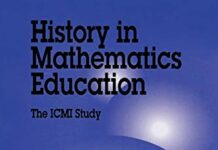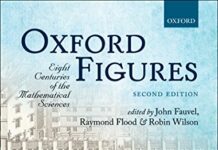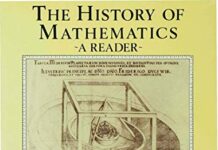
Ebook Info
- Published: 2006
- Number of pages: 200 pages
- Format: PDF
- File Size: 10.19 MB
- Authors: John Fauvel
Description
From Ancient Greek times, music has been seen as a mathematical art, and the relationship between mathematics and music has fascinated generations. This collection of wide ranging, comprehensive and fully-illustrated papers, authorized by leading scholars, presents the link between these two subjects in a lucid manner that is suitable for students of both subjects, as well as the general reader with an interest in music. Physical, theoretical, physiological, acoustic, compositional and analytical relationships between mathematics and music are unfolded and explored with focus on tuning and temperament, the mathematics of sound, bell-ringing and modern compositional techniques.
User’s Reviews
Editorial Reviews: Review “An ear-opening book for students of mathematics, especially those who plan to teach, whose style will also suit music students keen to think in new ways. Recommended”–Choice About the Author John Fauvel is formerly of the Open University, UK. Raymond Flood is in the Department for Continuing Education, Oxford University. Robin Wilson is at Keble College, Oxford University.
Reviews from Amazon users which were colected at the time this book was published on the website:
⭐Only two chapters address fundamental mathematical-musical issues, namely decent chapters on the Pythagorean principles of consonance and scales and Helmholtz’s theory of consonance. The rest of the book treats various quirky side topics, many of them trying in more or less contrived ways to force mathematical ideas (magic squares, finite projective planes, fractals, the Erlanger Programm, etc.) into a musical setting. Personally, I was amused by chapter 7 on bell-ringing: a bell-tower has a few different bells and of course “an evening spent playing unchanging rounds might be considered uneventful”, so we wish to change the ringing order of our bells, but “because bells are heavy and slow” we are limited to changing the order one adjacent pair at a time, and so eighteenth century bell-ringers developed a sophisticated understanding of symmetric groups generated by transpositions, which we can now illustrate with modern concepts and Cayley diagrams and so on, only to conclude that the ringers “had been doing ‘group theory’ and ‘ringing the cosets’ all along”. That’s about as good as it gets. The book as a whole suffers from many shortcomings including lack of depth (e.g., chapter 2 on Kepler’s musical cosmology doesn’t contain a single line of mathematics), lack of breadth (e.g., Fourier analysis is not even in the index), and lack of originality (e.g., chapter 4 consists of recycled Ian Stewart material which in turn was mostly recycled Barbour material, down to consistent misspelling of the main character’s name).
⭐This is a very interesting book; if you are interested in music and now it evolved mathematically; this is a good book. If you think about it “music is sound that is pleasing to the ear” as the definition has it. As such it must follow a set of rules. These rules are founded in mathematics. This book gives an insight into this in a readable way. You don’t have to know a lot about maths to follow the reasoning either.
⭐Extraordinary insight with plenty of musical and technical knowledge shared and explained. The book is a collection of essays that do (as they say) take you from early tunings and temperament, through the maths of sound, to the odd approaches to composing (e.g. Schoenberg). You need to be dedicated to the technological side of music, I would say, to appreciate this book, and open to peculiar methods of composing if you have a classical background. I’d say this is more of a college or university course book than an essential one for the musician. Very interesting it is, though.
⭐I bought this for my daughter, who is doing music and maths at A level. She read it cover to cover in 3 days and said it was great. What more can you want?
⭐Fantastic book full of positive surprises!Recommended.
⭐This book was a must – I’d been talking about it with a colleague….he pointed me to the library….but it was out….so just had to buy a copy and am not disappointed
Keywords
Free Download Music and Mathematics: From Pythagoras to Fractals in PDF format
Music and Mathematics: From Pythagoras to Fractals PDF Free Download
Download Music and Mathematics: From Pythagoras to Fractals 2006 PDF Free
Music and Mathematics: From Pythagoras to Fractals 2006 PDF Free Download
Download Music and Mathematics: From Pythagoras to Fractals PDF
Free Download Ebook Music and Mathematics: From Pythagoras to Fractals



